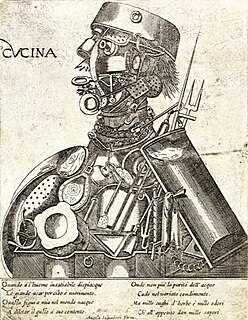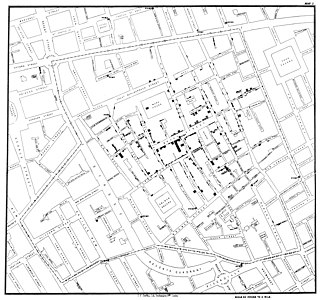
Cyberspace is a concept describing a widespread, interconnected digital technology. The term entered the popular culture from science fiction and the arts but is now used by technology strategists, security professionals, government, military and industry leaders and entrepreneurs to describe the domain of the global technology environment. Others consider cyberspace to be just a notional environment in which communication over computer networks occurs. The word became popular in the 1990s when the uses of the Internet, networking, and digital communication were all growing dramatically and the term cyberspace was able to represent the many new ideas and phenomena that were emerging.

A hobby is a regular activity done for enjoyment, typically during one's leisure time, not professionally and not for pay. Hobbies include collecting themed items and objects, engaging in creative and artistic pursuits, playing sports, or pursuing other amusements. Participation in hobbies encourages acquiring substantial skills and knowledge in that area. A list of hobbies changes with renewed interests and developing fashions, making it diverse and lengthy. Hobbies tend to follow trends in society, for example stamp collecting was popular during the nineteenth and twentieth centuries as postal systems were the main means of communication, while video games are more popular nowadays following technological advances. The advancing production and technology of the nineteenth century provided workers with more availability in leisure time to engage in hobbies. Because of this, the efforts of people investing in hobbies has increased with time.

Human geography or anthropogeography is the branch of geography that deals with the study of people and their communities, cultures, economies, and interactions with the environment by studying their relations with and across space and place. Human geography attends to human patterns of social interaction, as well as spatial level interdependencies, and how they influence or affect the earth's environment. As an intellectual discipline, geography is divided into the sub-fields of physical geography and human geography, the latter concentrating upon the study of human activities, by the application of qualitative and quantitative research methods.

Space is the boundless three-dimensional extent in which objects and events have relative position and direction. Physical space is often conceived in three linear dimensions, although modern physicists usually consider it, with time, to be part of a boundless four-dimensional continuum known as spacetime. The concept of space is considered to be of fundamental importance to an understanding of the physical universe. However, disagreement continues between philosophers over whether it is itself an entity, a relationship between entities, or part of a conceptual framework.
Globalization or globalisation is the process of interaction and integration among people, companies, and governments worldwide. As a complex and multifaceted phenomenon, globalization is considered by some as a form of capitalist expansion which entails the integration of local and national economies into a global, unregulated market economy. Globalization has grown due to advances in transportation and communication technology. With the increased global interactions comes the growth of international trade, ideas, and culture. Globalization is primarily an economic process of interaction and integration that's associated with social and cultural aspects. However, conflicts and diplomacy are also large parts of the history of globalization, and modern globalization.
Economic geography is the subfield of human geography which studies economic activity. It can also be considered a subfield or method in economics.
In economics, internationalization or internationalisation is the process of increasing involvement of enterprises in international markets, although there is no agreed definition of internationalization.. Internationalization is a crucial strategy not only for companies that seek horizontal integration globally but also for countries that addresses the sustainability of its development in different manufacturing as well as service sectors especially in higher education which is a very important context that needs internationalization to bridge the gap between different cultures and countries. There are several internationalization theories which try to explain why there are international activities.

The Chavín culture is an extinct, pre-Columbian civilization, named for Chavín de Huantar, the principal archaeological site at which its artifacts have been found. The culture developed in the northern Andean highlands of Peru from 900 BCE to 200 BCE. It extended its influence to other civilizations along the coast. The Chavín people were located in the Mosna Valley where the Mosna and Huachecsa rivers merge. This area is 3,150 metres (10,330 ft) above sea level and encompasses the quechua, suni, and puna life zones. In the periodization of pre-Columbian Peru, the Chavín is the main culture of the Early Horizon period in highland Peru, characterized by the intensification of the religious cult, the appearance of ceramics closely related to the ceremonial centers, the improvement of agricultural techniques and the development of metallurgy and textiles.
The Eurasian Economic Community was a regional organisation between 2000 and 2014 which aimed for the economic integration of its member states. The organisation originated from the Commonwealth of Independent States (CIS) on 29 March 1996, with the treaty on the establishment of the Eurasian Economic Community signed on 10 October 2000 in Kazakhstan's capital Astana by Presidents Alexander Lukashenko of Belarus, Nursultan Nazarbayev of Kazakhstan, Askar Akayev of Kyrgyzstan, Vladimir Putin of Russia, and Emomali Rahmon of Tajikistan. Uzbekistan joined the community on 7 October 2005, however later withdrew on 16 October 2008.

Organizational architecture has two very different meanings. In one sense it literally refers to the organization's built environment and in another sense it refers to architecture metaphorically, as a structure which fleshes out the organizations. The various features of a business's organizational architecture has to be internally consistent in strategy, architecture and competitive environment.
International business refers to the trade of goods, services, technology, capital and/or knowledge across national borders and at a global or transnational scale.

Roman gardens and ornamental horticulture became highly developed under Roman civilization. The Gardens of Lucullus, on the Pincian Hill in Rome, introduced the Persian garden to Europe around 60 BC. It was seen as a place of peace and tranquillity, a refuge from urban life, and a place filled with religious and symbolic meaning. As Roman culture developed and became increasingly influenced by foreign civilizations, the use of gardens expanded.
Community unionism, also known as reciprocal unionism, refers to the formation of alliances between unions and non-labour groups in order to achieve common goals. These unions seek to organize the employed, unemployed, and underemployed. They press for change in the workplace and beyond, organizing around issues such as welfare reform, health care, jobs, housing, and immigration. Individual issues at work are seen as being a part of broader societal problems which they seek to address. Unlike trade unions, community union membership is not based on the workplace- it is based on common identities and issues. Alliances forged between unions and other groups may have a primary identity based on affiliations of religion, ethnic group, gender, disability, environmentalism, neighborhood residence, or sexuality.

A market is one of the many varieties of systems, institutions, procedures, social relations and infrastructures whereby parties engage in exchange. While parties may exchange goods and services by barter, most markets rely on sellers offering their goods or services in exchange for money from buyers. It can be said that a market is the process by which the prices of goods and services are established. Markets facilitate trade and enable the distribution and resource allocation in a society. Markets allow any trade-able item to be evaluated and priced. A market emerges more or less spontaneously or may be constructed deliberately by human interaction in order to enable the exchange of rights of services and goods. Markets generally supplant gift economies and are often held in place through rules and customs, such as a booth fee, competitive pricing, and source of goods for sale.

Aire is a French commune in the Ardennes department in the Grand Est region of northern France.
Uneven and combined development is a concept in Marxian political economy intended to describe dynamics of human history involving the interaction of capitalist laws of motion and starting world market conditions whose national units are highly heterogeneous.

The following outline is provided as an overview of and topical guide to geography:

Alter-globalization is a social movement whose proponents support global cooperation and interaction, but oppose what they describe as the negative effects of economic globalization, considering it to often work to the detriment of, or not adequately promote, human values such as environmental and climate protection, economic justice, labor protection, protection of indigenous cultures, peace and civil liberties.
The archaeology of trade and exchange is a sub-discipline of archaeology that identifies how material goods and ideas moved across human populations. The terms “trade” and “exchange” have slightly different connotations: trade focuses on the long-distance circulation of material goods; exchange considers the transfer of persons and ideas.

Cognitive geography is an interdisciplinary study of cognitive science and geography. It aims to understand how humans view space, place, and environment. It involves the formalization of factors that influence our spatial cognition to create a more effective representation of space. These improved models assist in a variety of issues, for example, the developing maps that communicate better, providing navigation instructions that are easier to follow, utilizing space more practically, accounting for the cultural differences on spatial thinking for more effective cross-cultural information exchange, and an overall increased understanding of our environment.











